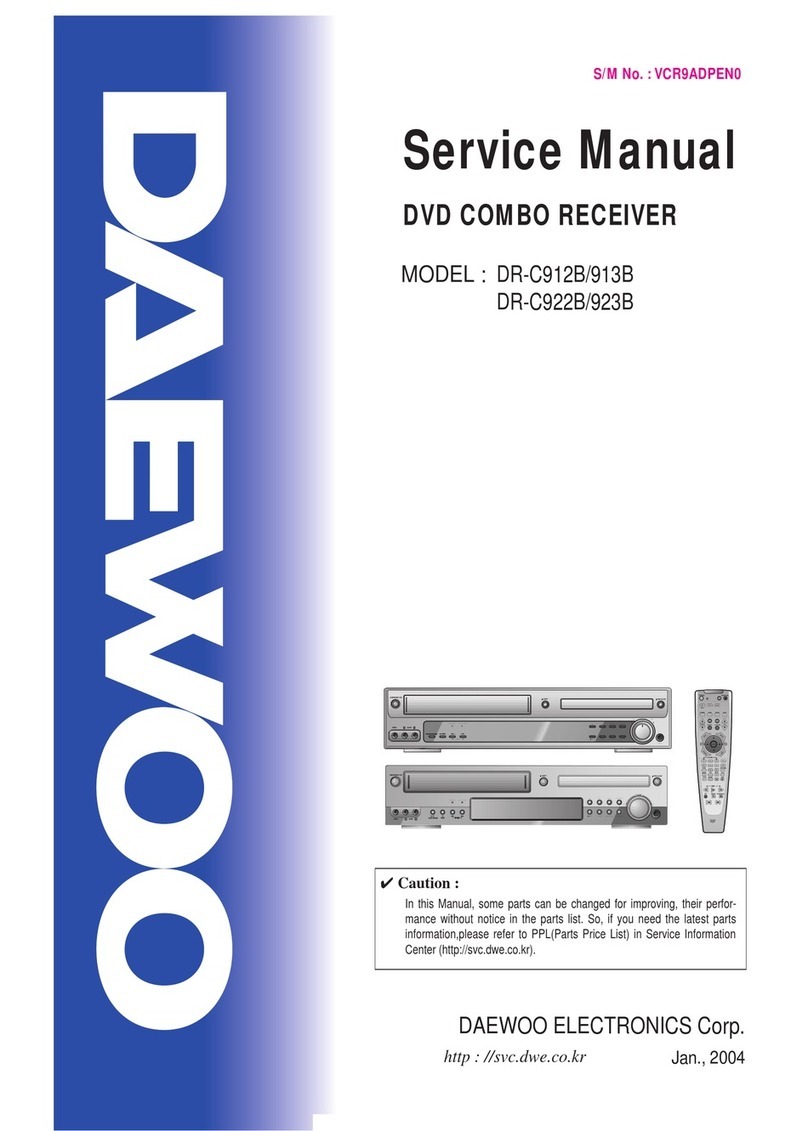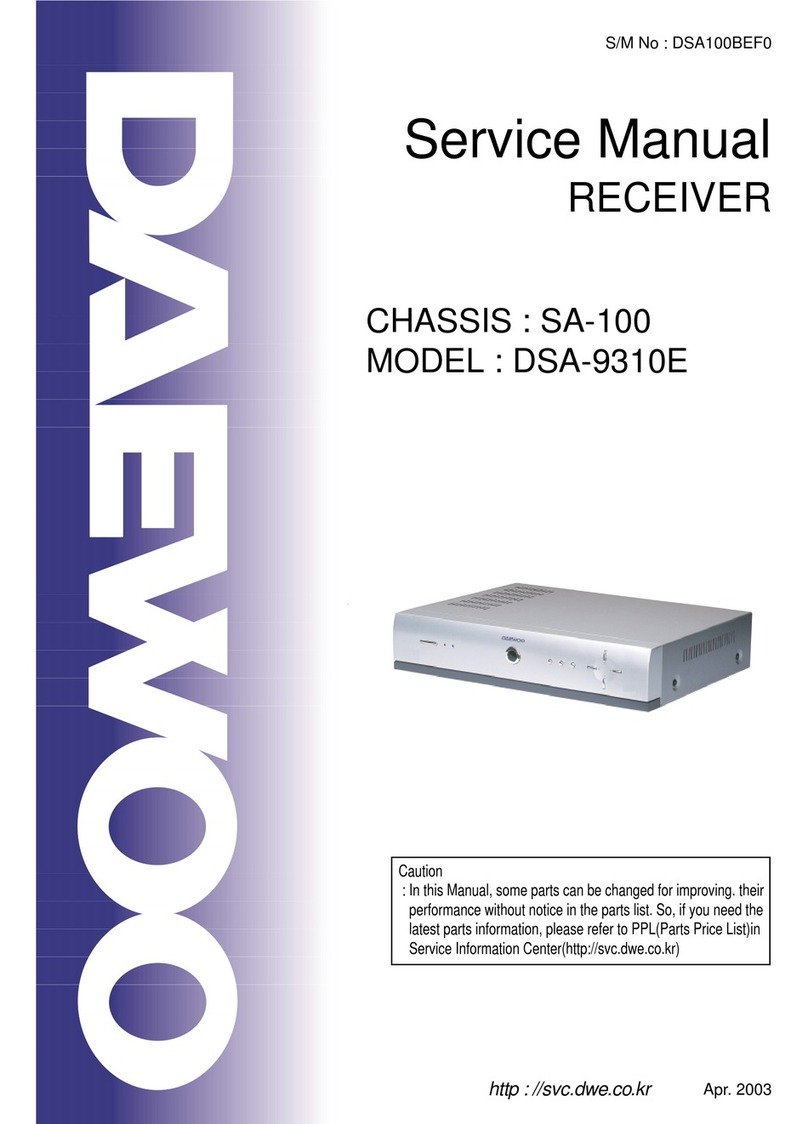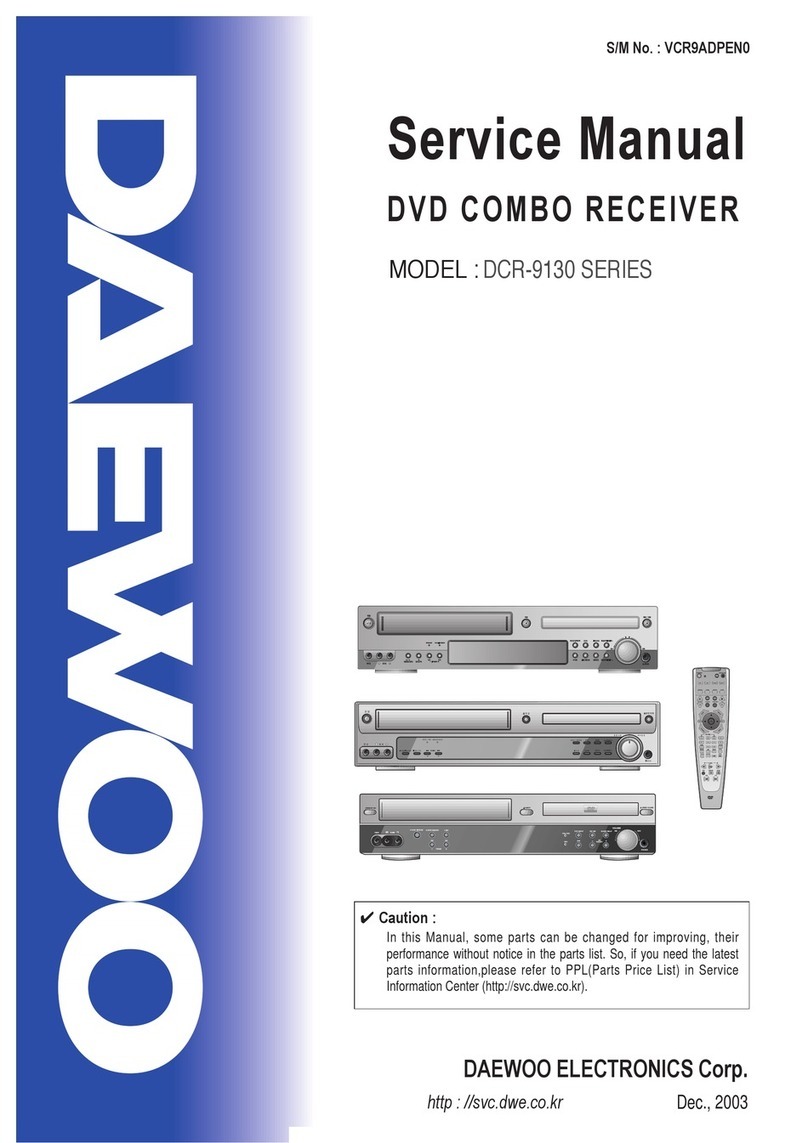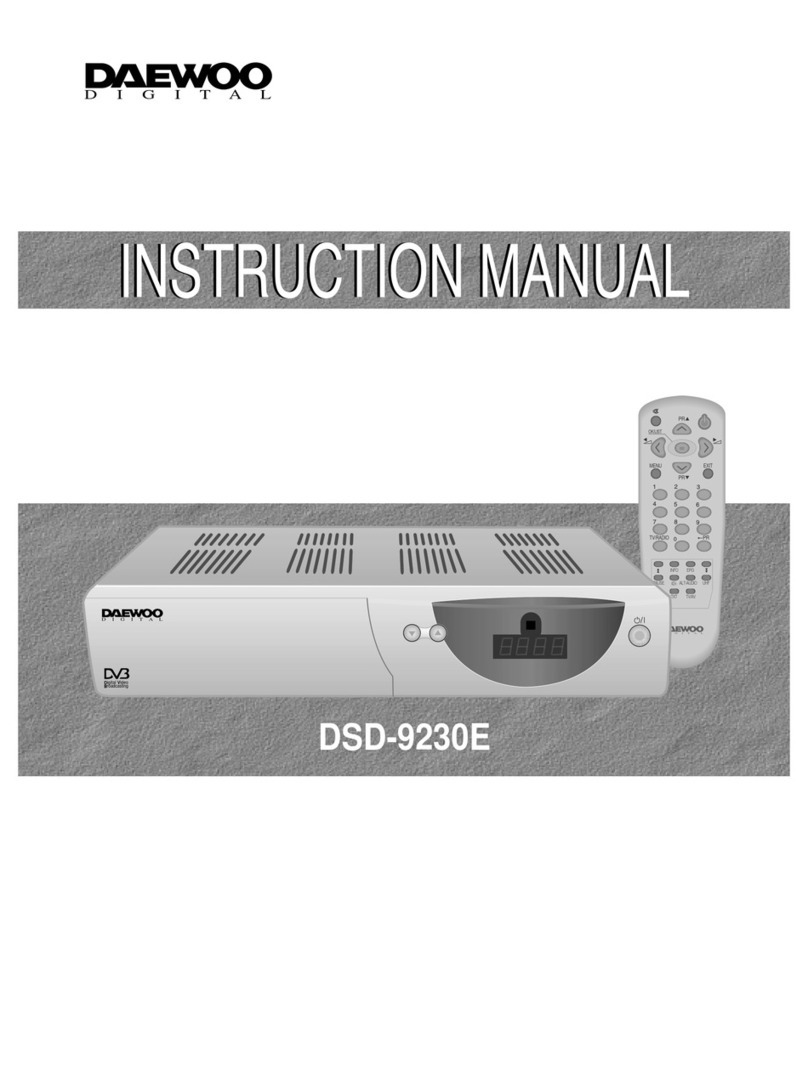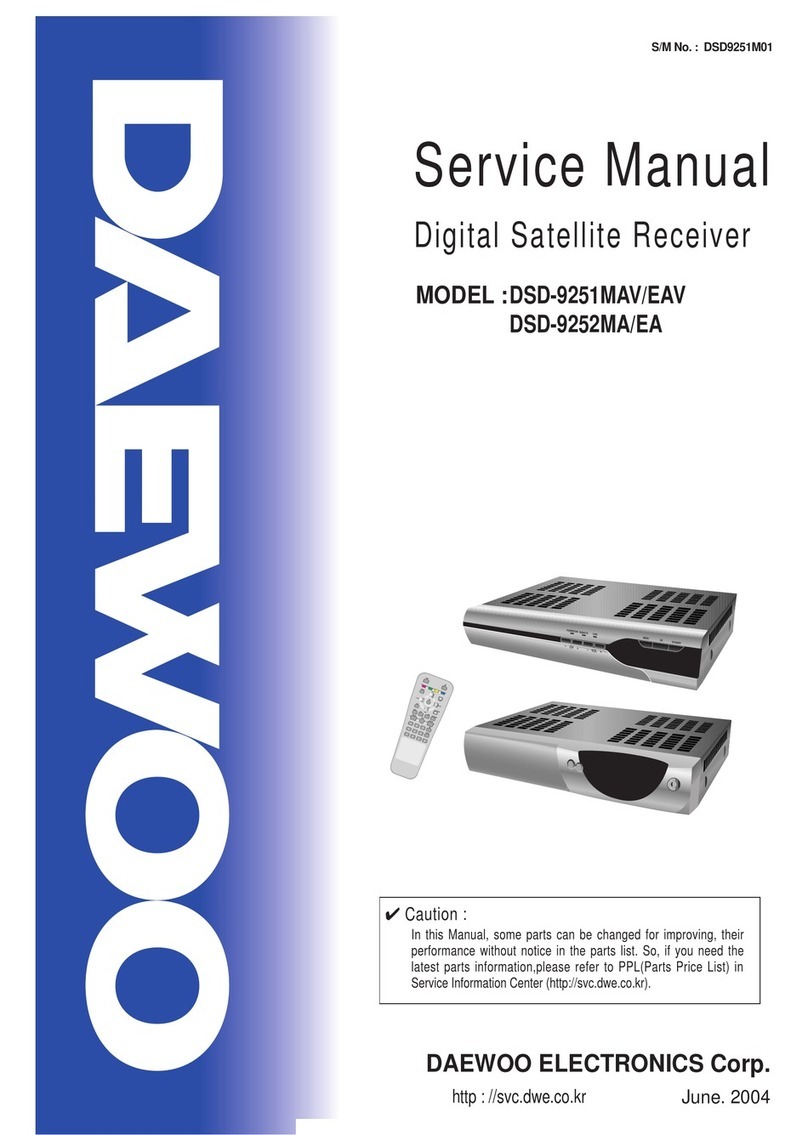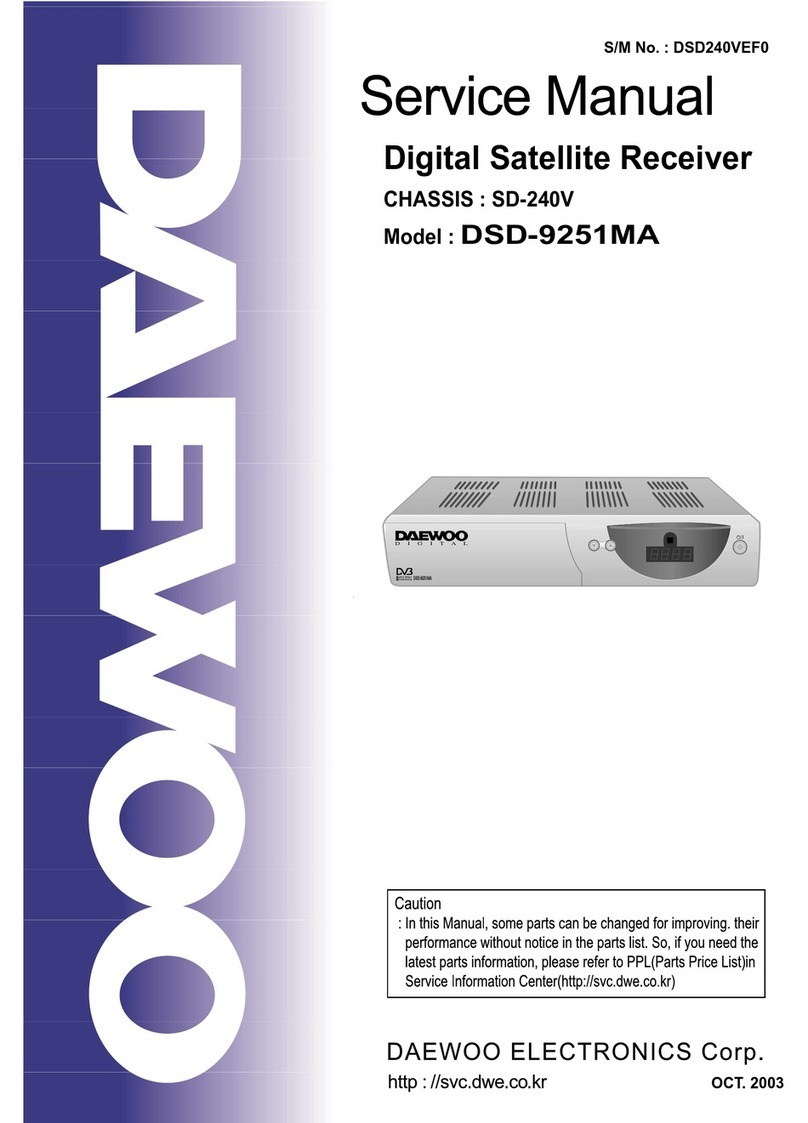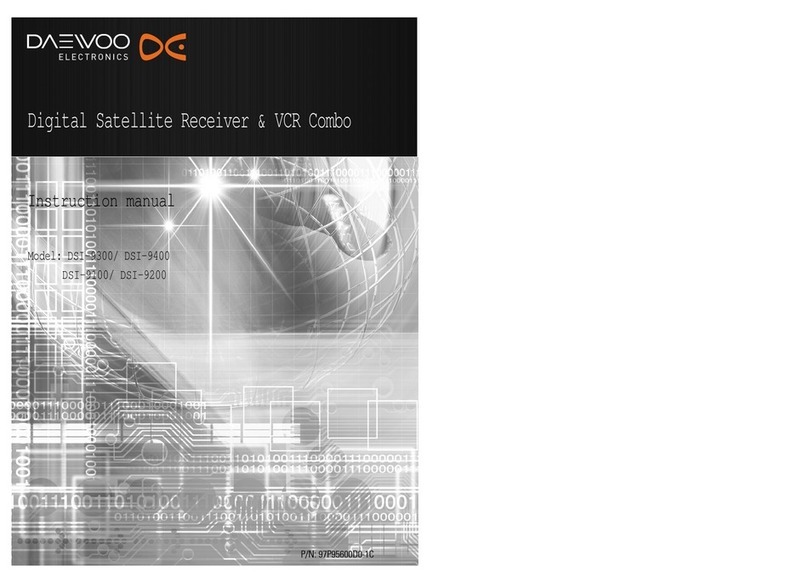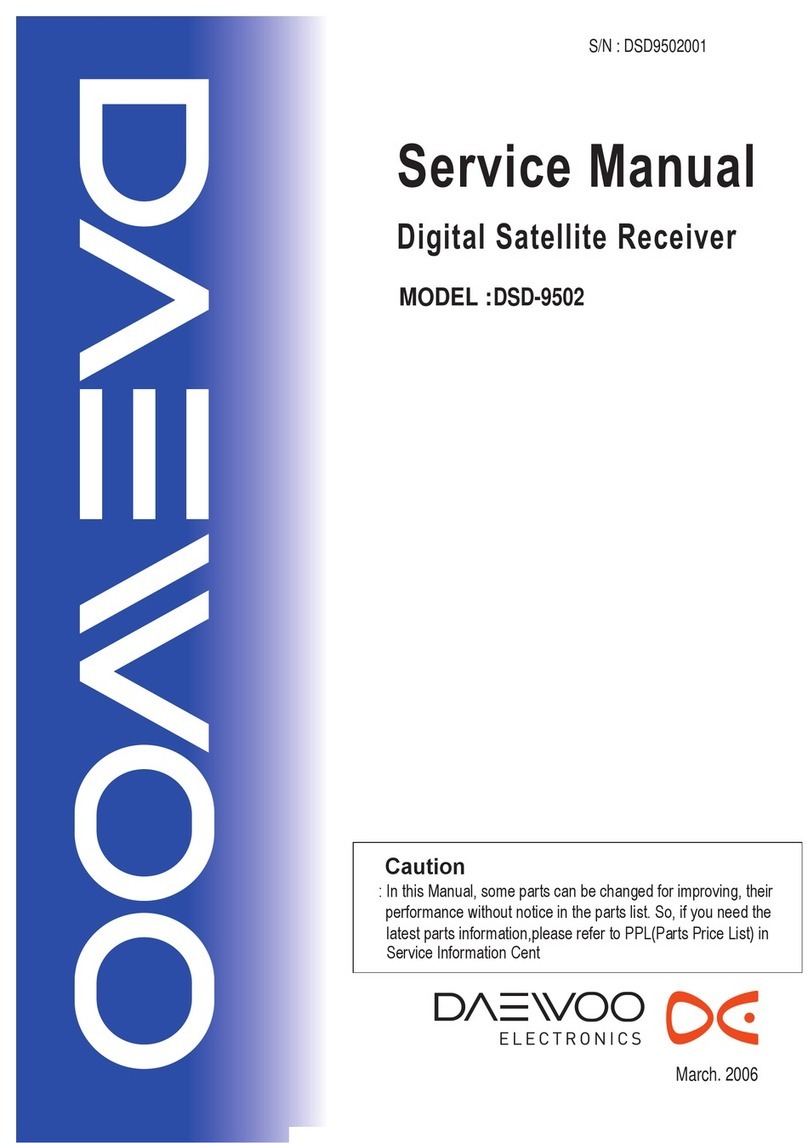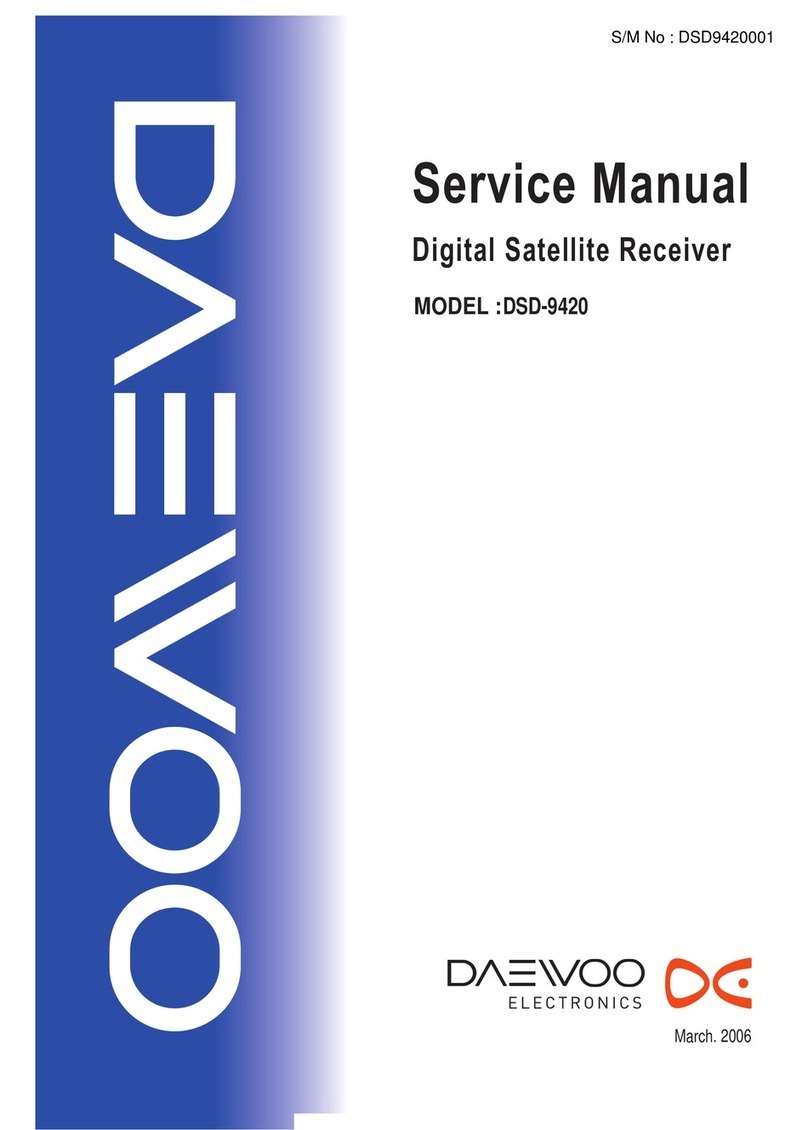2
GENERAL INFORMATION
A Digital Satellite Receiver is a convenient product that allows you to view a variety of programs provided through satellite.
This user’s guide covers the installation of the DSR and the necessary steps to implement various features.
This also explains special features available only in this DSR in detail, which will allow you to make full of these feature.
• High quality Digital Video & Audio
• Fully MPEG2, DVB compliant
• One step direct move menu system (Go To function)
• Provide friendly and easy-to-use menu system
• Install Wizard system in the earliest of the world
• Various channel editing function
(favorite, moving, locking, renaming, deleting and sorting)
• User programmable various Satellite & Transponder information
• Automatically search for newly added transponder
• Stores up to 2000 channels
• Easy and speedy software upgrade through RS-232 port
• Plug-and-plug data transfer system (DSR to DSR)
• Automatically each channel volume saving function
• Timer function, automatically turns On/Off by setting function
(daily, weekly, monthly, one time)
• Automatic reserved channel moving system
• Provide Electronic Program Guide (EPG)
• Teletext function support
• Antenna Positioning Help feature
• Selectable Video output (CVBS, RGB, S-VHS)
• Provide various switch types, LNB types and NTSC/PAL monitor type
• SCPC/MCPC Receivable from C/Ku Band Satellite
• Multi LNB controlled by DiSEqC 1.0 DiSEqC 1.2 and 22KHz switching
• 256 colors On-Screen-Display
• PAL&NTSC Video Compatible (TV Type auto detect)
• Last channel auto saving
• Allow clear space around the DSD-9250E for sufficient ventilation
• Do not cover the DSD-9250E or place it on a unit that emits heat
• Use a soft cloth and a mild solution of washing-up liquid to clean the casing
• Do not connect or modify cables when the DSD-9250E is plugged in.
• Do not remove the cover
• Do not allow the unit to be exposed to hot, cold or humid conditions
• Never allow liquids, spray or other materials to come into contact with the inside of the DSD-9250E
After purchasing the DSR, unpack it and check to make sure that all of the following items are included in the packaging
• 1 x Remote Control Unit (RCU)
• 1 x User’s Guide
• 1 x DSR
Throughout this manual you will notice that the everyday operation of your DSD-9250E is based on a series of user friendly
on screen display and menus. These menus will help you get the most from your DSD-9250E, guiding you through
installation, channel organizing, viewing and many other functions.
All function can be carried out using the buttons on the remote control, and some of the function can also be carried out
using the buttons on the front panel.
